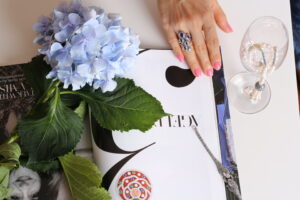
Mood rings have fascinated wearers for decades, offering a colorful way to reflect how we might be feeling. These rings, especially in their timeless silver setting, are stylish accessories that change colors depending on temperature shifts. Each hue represents a general emotional state, and one of the most curious among them is gray. If you’ve ever worn a mood ring and noticed it turn this muted shade, you may have wondered what it means. septum piercing
In this article, we explore the meaning of the gray mood ring color, what factors may cause it, and how to respond when your silver mood ring shifts into this mysterious tone.
Mood Ring Color: What Gray Represents
Gray is often associated with low energy or emotional uncertainty. On mood rings, it typically indicates a state that falls somewhere between calm and stressed. Unlike bright colors like blue or green, which signal contentment and balance, gray tends to reflect more subtle or subdued states.
Common Interpretations of Gray on a Mood Ring:
- Fatigue: Your body may be physically tired, leading to cooler skin temperatures that trigger the gray color.
- Disconnection: A feeling of being mentally or emotionally checked out.
- Indecision or Uncertainty: Gray is a neutral color, often symbolizing a lack of clarity.
- Low Emotional Engagement: Not overly sad or happy just flat or uninvolved.
That said, mood rings are not medical or psychological tools. They can’t truly diagnose emotions but offer a general sense based on body temperature changes.
Why Your Ring Might Turn Gray
Let’s explore a few reasons both emotional and environmental why your silver mood ring might shift to gray:
1. You’re Tired or Dehydrated
Low energy levels reduce your body’s peripheral circulation, resulting in cooler fingers and extremities. This may cause the ring to appear gray.
2. Cold Environment
Even a small drop in ambient temperature can affect your ring. If you’re in an air-conditioned room or outdoors on a chilly evening, the mood ring may reflect a gray tone due to the external environment rather than your actual feelings.

3. Emotional Neutrality
Feeling emotionally “numb” or in a neutral mental state may lead to your body reflecting a lower temperature, especially if your pulse and breathing slow slightly.
4. Lack of Stimulation
Gray often shows up when you’re not particularly engaged or excited. This could be during long meetings, waiting in line, or completing repetitive tasks.
How to Respond When You See Gray
Seeing gray on your mood ring doesn’t mean something is wrong, but it might be an invitation to check in with yourself.
Here are a few things you can do:
- Take a Break: Step outside, stretch, or breathe deeply.
- Hydrate: Dehydration impacts blood flow and skin temperature.
- Check Your Surroundings: Are you cold? Move somewhere warmer to see if the ring changes.
- Reflect on Your Mood: Are you bored, tired, or emotionally low? Sometimes awareness alone helps you feel more grounded.
How Gray Compares to Other Mood Ring Colors
Understanding gray in context helps you use your mood ring more effectively:
- Gray vs. Blue: Blue represents calm and peace. If your ring moves from gray to blue after a walk or deep breathing, you’ve likely entered a more relaxed emotional state.
- Gray vs. Amber: Amber is associated with nervousness. Gray, on the other hand, may signal low stimulation rather than active worry.
- Gray vs. Black: Black usually indicates stress or very cold body temperatures. Gray is less intense, often seen as the middle ground.
Mood Ring Color as a Reflection Tool
Though not a scientific diagnostic tool, the mood ring color can still offer valuable cues. Think of it as a gentle nudge to stay present and aware of how your body and emotions are interacting.
Try using your mood ring as a check-in device throughout the day:
- In the morning: Does it start gray and shift as you become more active?
- During work: Do certain tasks lead to gray more often than others?
- In the evening: Does gray appear when you start winding down?
These patterns can reveal when you need rest, stimulation, or even a shift in perspective.

Style Tip: Embrace the Gray
A silver mood ring that turns gray doesn’t have to be a downer. In fact, the color pairs beautifully with neutral and minimalist wardrobes. Try styling it with:
- Charcoal or slate outfits for monochrome elegance
- Soft, natural fabrics to enhance the relaxed vibe
- Layered silver accessories for a modern, intentional look
By embracing the shade as part of your aesthetic, you turn it into a symbol of reflection rather than disinterest.
When your silver mood ring turns gray, it may be your body’s way of signaling a need for rest, reflection, or emotional reconnection. While it doesn’t offer exact emotional readings, the gray mood ring color can act as a helpful reminder to pause and consider how you’re feeling physically and mentally.
So, the next time your ring shifts to gray, don’t see it as a negative. See it as an opportunity to slow down, breathe, and reconnect with yourself in the present moment.
